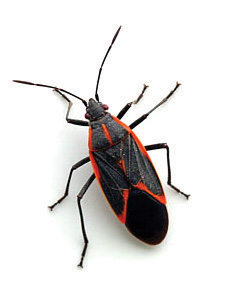What do boxelder bugs look like?

If you've found yourself wondering why boxelder bugs have suddenly invaded your living space, you're not alone. These small, black and red insects can appear in large numbers seemingly out of nowhere. Understanding the reasons behind their presence in your home is crucial for effective management and prevention.
What Attracts Boxelder Bugs to My Home?
Understanding why boxelder bugs enter your home is the first step in effective pest management. Here are some common reasons behind their presence:
- Seeking Shelter: Boxelder bugs typically seek shelter indoors during the fall and winter months to escape the cold weather. They are attracted to warm and cozy environments, making your home an ideal refuge.
- Food Sources: Boxelder bugs feed on the seeds of boxelder trees, as well as other plants such as maple and ash trees. If your property has these trees nearby, especially boxelder trees, it increases the likelihood of boxelder bugs finding their way into your home.
- Cracks and Crevices: These pests can enter your home through small cracks, gaps, and openings in doors, windows, siding, and foundations. Once inside, they may seek out warm, sunny areas such as south-facing walls or windowsills.
- Sunlight Attraction: Boxelder bugs are attracted to sunlight and warmth. They may congregate on the exterior of your home, especially on sunny days, and inadvertently find their way indoors through open doors or windows.
Tips for Preventing and Managing Boxelder Bug Infestations
Understanding how to prevent and manage boxelder bugs in your home is essential for maintaining a pest-free environment. Here are some effective strategies:
- Seal Entry Points: Inspect your home for any cracks or openings and seal them with caulk or weatherstripping. Pay particular attention to areas around doors, windows, vents, and utility pipes.
- Remove Food Sources: If possible, eliminate boxelder trees or female boxelder trees (which produce seeds) from your property. Additionally, keep vegetation trimmed away from the exterior of your home to reduce the attractiveness of your property to boxelder bugs.
- Use Physical Barriers: Install screens on windows and doors to prevent boxelder bugs from entering your home while still allowing for ventilation. You can also use door sweeps to seal gaps beneath exterior doors.
- Vacuuming and Removal: If boxelder bugs do find their way indoors, vacuum them up using a vacuum cleaner with a hose attachment. Dispose of the vacuum bag or empty the canister outdoors to prevent them from returning inside.
- Professional Pest Control: If you're dealing with a significant infestation or need assistance in managing boxelder bugs, consider hiring a licensed pest control professional. They can provide targeted treatments to eliminate existing bugs and offer advice on preventing future infestations.
Dealing With Boxelder Bugs? Cooper Pest Solutions Can Help!
Cooper’s Boxelder Bug Prevention Program is designed to effectively reduce the influx of boxelder bugs into your home during the fall season. Our treatments are strategically scheduled between October 15th and 30th to achieve optimal results.
Even if your home is currently infested with boxelder bugs, our Boxelder Bug Prevention Program can still provide relief. While we strive for significant reduction, it's important to note that complete eradication cannot be guaranteed.
Ready to regain control over boxelder bugs in your home? Contact us today by giving us a call or filling out the contact form on this page to learn more about our Boxelder Bug Prevention Program.

